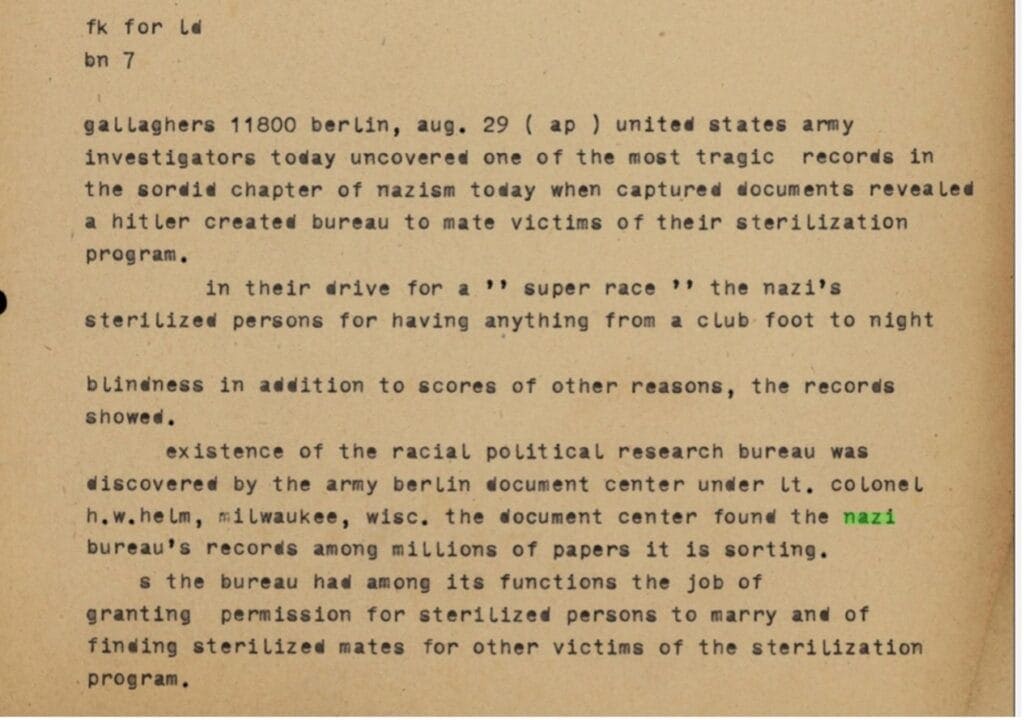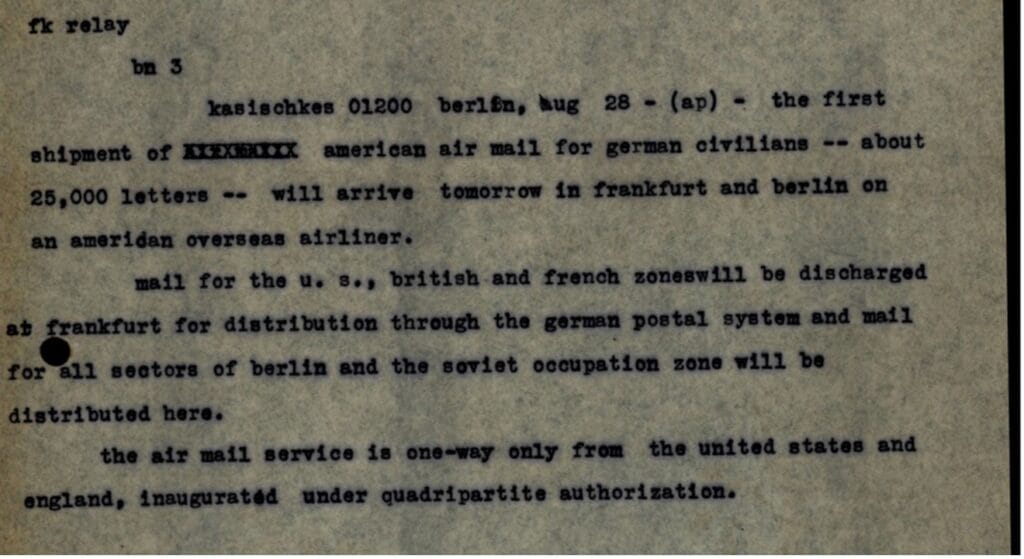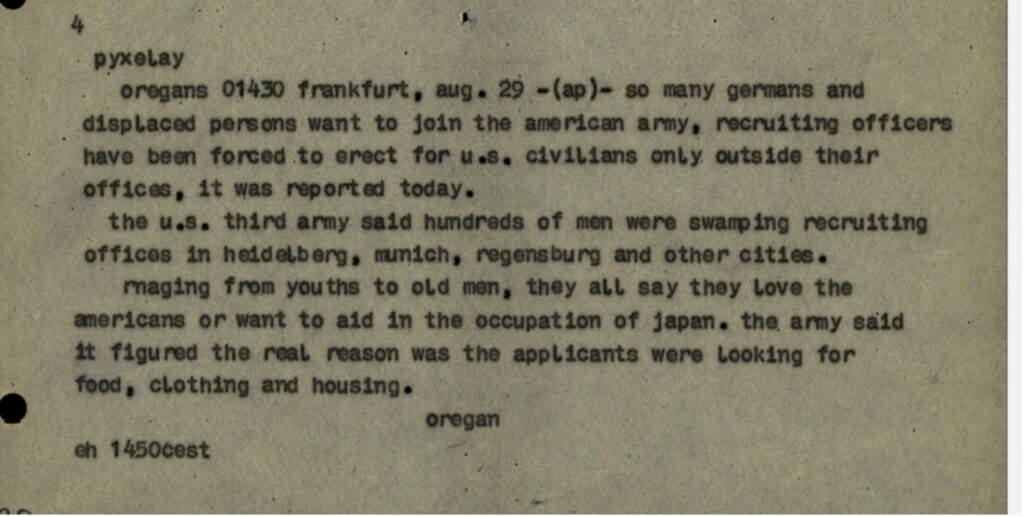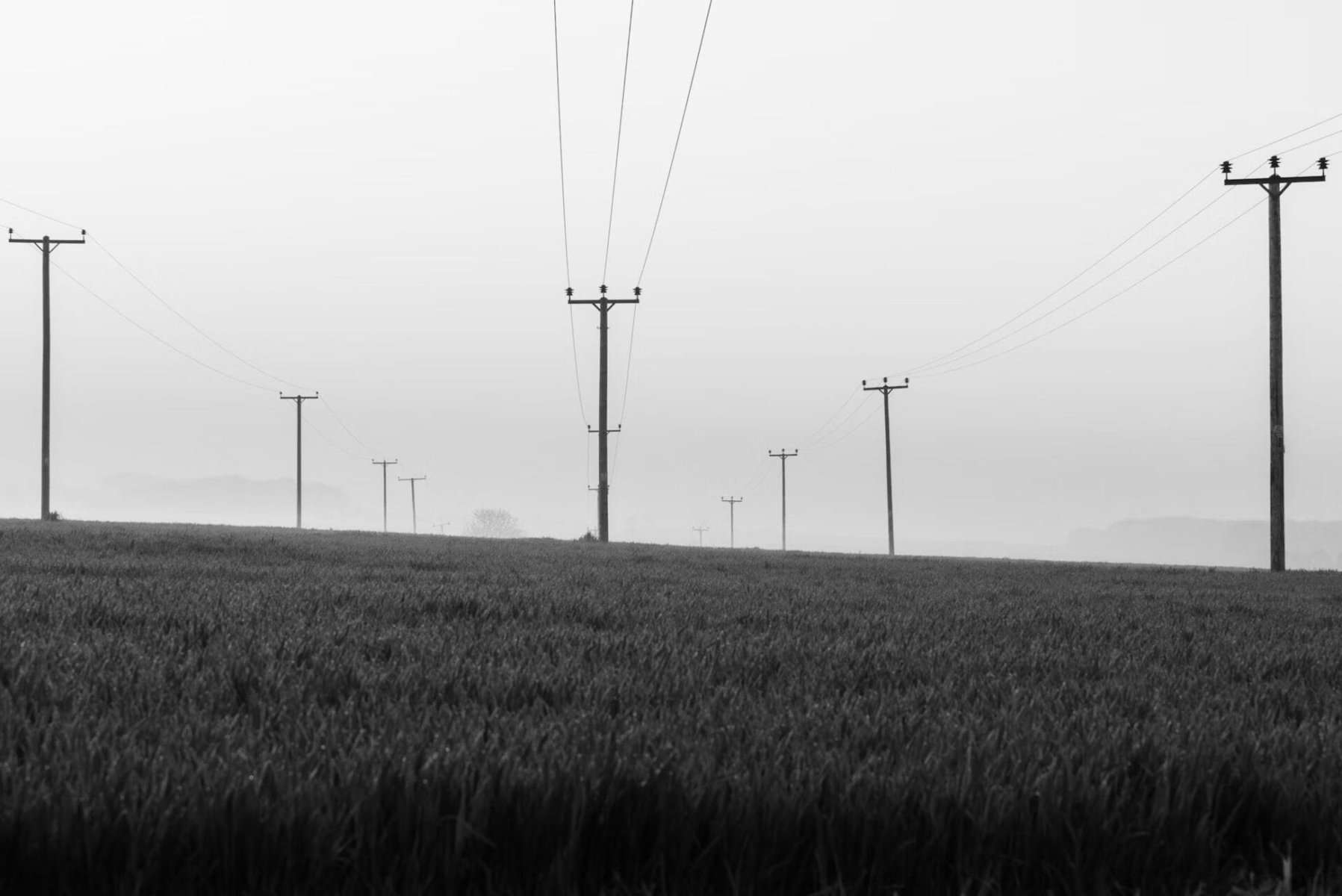│By Charlotte Steffen, Gale Ambassador at the University of Portsmouth│
One of the greatest revolutions in journalism was the introduction of the newswire which allowed the sending of information around the world at a much faster pace than ever before. As a History PhD student, and a frequent user of Gale Primary Sources, I have come to heavily rely on newspapers for information in my research but also use them to get an insight into public opinions or changes in opinion. Using Gale’s Associated Press Collections, I investigated how these historic documents give an insight into the civil population’s daily life during the post-war period and its importance for the present-day historic discourse.
The Wire
In today’s age, information is omnipresent. The Gaza conflict, war in Ukraine, elections, fashion, what your roommate had for brunch, anything can essentially become news or a news outlet, and this has been the case for quite some years now. It is very easy to forget that ubiquitous access to news is still a relatively recent discovery. From my repeated experiences of consulting newspapers for knowledge, I have started to think extensively about the role that speed plays in the consumption of news and information and how this has changed over time.
With the introduction of the first commercial telegraphs in 1837, news could be transmitted over copper wire over great distances. In the simplest of terms, a wire, or in this case a newswire, is the process by which a company (such as the Associated Press) produces items and shares them with a global network of partners that receive news stories from them and republish them in their own periodicals, newspapers, and other media.
During the 19th century, the public and governing bodies all relied on newswires for daily and up-to-date information on world-events. There were four main international services: Havas in Paris, Reuters in London, Wolff’s in Berlin, and the Associated Press in New York. As stated by Nahlbach “a wire-service report had to be produced for a mass market with varied political, promotional, and even production requirements. Any sign of political engagement or commercial favouritism would compromise its reputation. And reputation was everything.”1
This also allows for the resources to be viewed as relatively trustworthy, although one must always remember the internal bias of the author and the intended reader of said information.
The Archive
Gale’s Associated Press Collections is one example of an archive that has been built from these international services. The Associated Press (AP) is an American news agency who posted its journalists throughout Europe. Through the wire they could immediately report back to America. During the Cold War, the AP reported on Eastern Europe from Vienna, its principal listening post, but also from Prague and Warsaw and covered the important events in European History.
From this archive, I wish to focus on one particular collection: the Associated Press Collections: European Bureau, which features documents from the Berlin bureau dated from August 1946. This single binder of wire copies, rescued from the Bureau‘s cellar, captures the post-World War Two chaos of Berlin. The following four archival documents present very different sources from the same archive that can be used in a variety of contexts for historical research.
Post-World War Two Newswires

One of the most impactful pieces that I found is a wire regarding the US army’s uncovering of records about the Nazi’s sterilisation programmes. The report details the loss of agency that a sterilised person would experience post-procedure, as they had to seek permission to marry. As evident in the above image, the language highlights the extreme methods of the Nazis.
Another piece details the first shipment of American air mail for German civilians of “about 25,000 letters”. At first glance this may seem like mundane information, however it is important to remember how many people had been uprooted from their homes and families due to the war. These letters are addressed to the civilians, meaning they were arriving from families and friends abroad trying to get into contact with their loved ones. The wire below gives a small insight into the large number of displaced people during this time on both sides of the conflict.

The theme of displacement also rings true in this next source detailing the impact that the war had on people’s livelihoods. This document reports that German men throughout the country, and of all ages, were trying to join the American army via the recruiting services. The US army comments that the men’s “real reason” for wanting to join up was their search “for food, clothing and housing”. To succeed, they would go as far as to claim that they wished to aid the occupation of Japan.

The final source that I want to discuss is a wire detailing a sporting event organised by the US army in the Berlin Olympia stadium. The wire copy states that for many German sports fans, their last visit to the stadium was during the Olympics in 1936, where African-American athlete Jesse Owens “ran away from everybody”. At the time, Jesse Owens’ win put a dampener on Germany’s attempts to prove the physical superiority of the Aryan race. Therefore, it’s fascinating to see that he remained a “wonderful American sprinter” in the German public memory.

Conclusion
History is not a straight line; it must be continuously re-examined within each generation. To do so, the preservation of documents, such as the newswires, must remain a priority and digitisation is a great tool to ensure that historical resources remain accessible for all. Newswires are tangible proof of events that someone considered important enough to sit down and type out. The good, the bad, the mundane. Their content can also be used to explore a number of versatile subjects, such as to discuss the loss of bodily autonomy, life in a post-world war world and even the unifying influence of sports. All these are events that make up our past. And as we all know, the past is history.
Blog post cover image citation: Unsplash, Sean Ferigan https://unsplash.com/photos/grayscale-photo-of-electric-posts-rTAQiPLj0KE?utm_content=creditShareLink&utm_medium=referral&utm_source=unsplash
If you enjoyed reading about how archival documents give valuable insight into historical world events check out these posts:
- Exploring the State Papers Online Colonial module about Singapore, East Malaysia, and Brunei
- Researching Cults using Gale’s Online Resources
- Screens to Pages: Discussion of Film in Newspaper Archives Over the Decades


